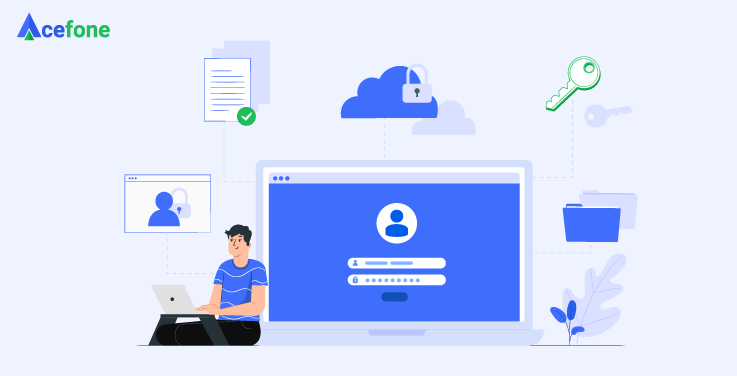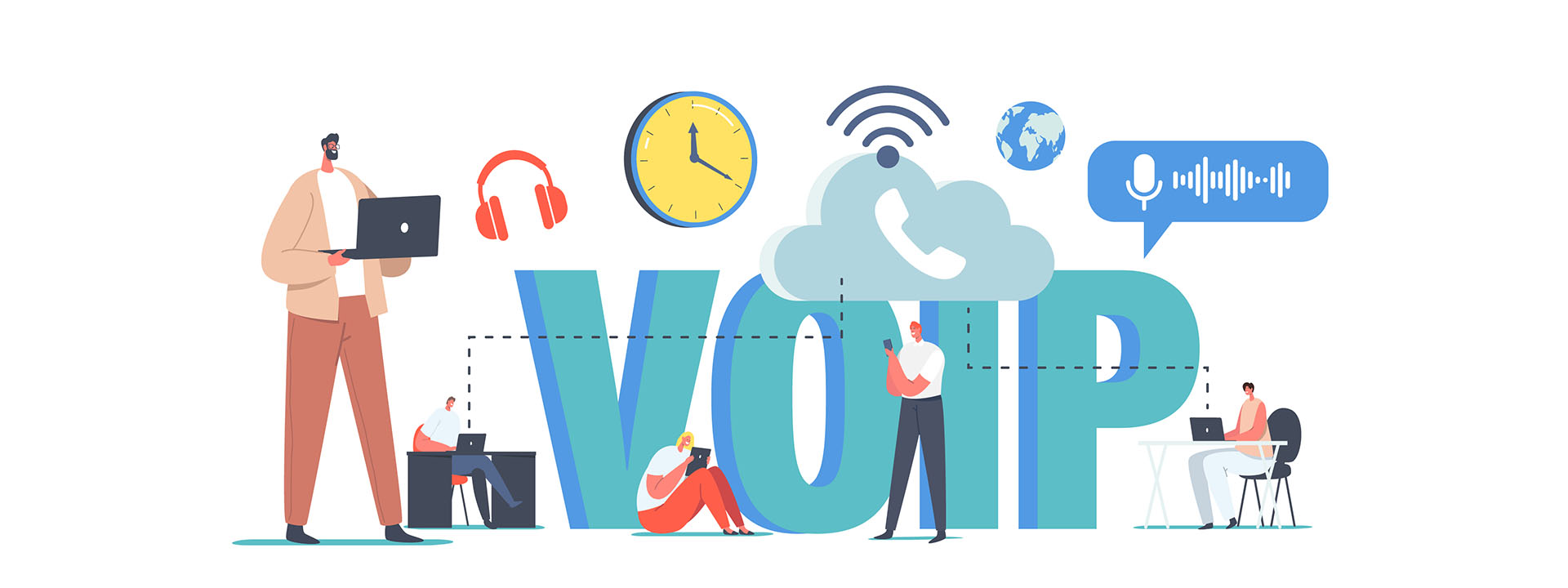Technical jargon can often be intimidating, and sometimes even deterring. You have to keep searching every other word up on the Internet, wasting your time and tiring your efforts. However, there’s no need to be bothered by these cloud terminologies anymore! Use our ready resource to answer all your queries. We have collated the most used terms in this field for your convenience.
1. ACD:
Automatic Call Distribution, also known as virtual-receptionist or automated call attendant, is a telephony system that automatically routes incoming calls to various agents or teams on different devices (mobile, landline, etc.).
2. Automated Calls:
Calls that play a pre-recorded voice message for the customer are known as automated calls. These can be triggered to any number of people, at any time by setting up a voice-recording.
3. Agent Absenteeism:
This call center metric calculates the total number of days or hours of unauthorized or sudden leaves taken by an agent.
Mathematically, it is calculated by the formula:
Agent absenteeism = Total hours of unauthorized absence / Total hours of expected service (over the same period)
4. Agent Attrition:
This call center metric helps managers calculate the agent turnover rate in a given period of time.
Mathematically, it is given by the formula:
Agent attrition rate = Number of agents that leave in a given period of time / The average number of agents in the same period of time
5. AI:
Artificial Intelligence (AI) is a branch of computer science aimed at building smart systems or machines that can act and think like humans. The overall goal of AI is to learn and achieve specific tasks without any human intervention.
6. API:
Application Programming Interface (API) is a programming code or algorithm that enables two or more software applications to interact with each other. In other words, an API transmits information from one data point to another.
7. Average Call Handling Time (AHT):
This metric identifies the average time spent by an agent to complete a call. Here we consider the total duration of the call—from the time it is picked to the time it is disconnected.
It is given by the formula:
Average call handling time = (Total Conversation time + Queue Time + Total Wrap up time) / Total number of calls
Refer to points 32 and 40 for the definitions of wrap up time and queue time.
8. Average Speed of Answer (ASA):
This refers to the average time taken by a contact center to answer an incoming call.
The formula used is:
Average speed of answer = Total wait time for call / Total number of received calls
9. Bulk SMS:
It is a mass communication tool used to broadcast text messages to several recipients instantly. It can be used to promote products and services or give live updates. You can procure this bulk SMS solution via traditional telecom providers or via cloud telephony service providers.
10. Business Continuity Plan:
It is a process of creating solutions or systems of recovery and caution to deal with potential damage or threats to a company. As the name suggests, it also aims at maintaining operational continuity, uninterrupted by any disaster. Cloud telephony supports BCP by facilitating uninterrupted call handling efficiently.
11. C2C:
Click-to-call is a marketing tool that allows seamless connection with a business at zero cost. A user simply clicks on a button to enter their contact number, and the company calls them back instantly.
12. Call Abandonment Rate:
This metric is defined as the number of abandoned or dropped calls as a fraction of total incoming calls. It gives an insight into the efficiency of a call center.
The formula used is:
Call abandonment rate = Number of abandoned calls / Total number of incoming calls
13. Computer Telephony Integration (CTI):
Commonly referred to as CTI, it is a technology that allows interactions between telephones and computers to be coordinated. The term can also be used to describe automatic call routing as a server-based function.
14. Call Forwarding:
Also known as call diversion, it is a telephony feature that facilitates re-directing of calls to another number.
15. Call Queue:
This concept is widely used in call centers. When all agent lines are busy, subsequent calls are placed on a virtual queue known as a call queue. As it is an important concept, call center managers should focus on call queue management with proper techniques.
16. Cloud Telephony:
It refers to a phone exchange or a PBX system that is hosted on an off-premises data center. You access these services via the Internet (cloud) and enjoy several advantages over traditional PBX. Solutions like IVR, TFN, number masking, voice broadcasting, and more, just add to the appeal of cloud telephony solutions.
Recommended Read: Ultimate Guide to Brand Building with Cloud Telephony
17. Call Recording:
It is a vital feature of cloud telephony that lets you record all the answered calls. Therefore, a record of your conversations with the clients is always present on the database.
18. Conversion Rate:
This metric gives an idea about the total number of successful calls. The definition of call success can vary across call centers. For some, it means the number of converted sales, while others can perceive it to be the number of resolved or closed queries.
It is given by the formula:
Conversion rate = (Number of successful calls in a given period / Total number of calls received in the same period) * 100
19. Cost Per Call:
You can gauge the overall return on investment (ROI) using this parameter.
Mathematically, it is defined as:
Cost per call = Total cost of running a call center in a given period / Total number of calls received in the same period
20. Customer Satisfaction:
This subjective call center metric gives a tentative measure of happiness or satisfaction level of a customer. It is generally gauged through survey or feedback campaigns, though companies also often define their own parameters to understand customer satisfaction levels.
21. Customer Experience (CX):
This refers to the overall impression a brand leaves on a customer. A good CX implies all or most of the customers’ expectations were fulfilled with the best possible service. It is an umbrella term that encapsulates the entire customer journey, starting from reaching potential clients to the final sale and post-sale assistance.
22. Cybersecurity:
Cybersecurity refers to various practices and corresponding technologies adopted to protect digital devices and connecting networks from data theft or unauthorized access.
23. DTMF:
Dual-Tone Multi-Frequency is the frequency of tones generated when someone presses on the mobile or landline keypads. The specific frequency of a digit is used to transfer information to the corresponding agency.
24. Hosted PBX:
A PBX system provided by a third-party enterprise is known as a hosted PBX system. It can be accessed with an Internet connection (cloud) or PSTN service. Cloud-hosted PBX systems offer several benefits like efficient call routing, personalized messages, analytics, and more. Therefore, this solution proves to be more cost-effective than traditional systems.Refer to points 28 and 31 for definitions of PBX and PSTN.
25. First Call Resolution:
This refers to the capability of a call center to resolve issues or complete sales on the first call a customer makes.
Mathematically, it is given by the formula:
First Call Resolution = Number of successful calls in the first attempt / Total number of unique or first calls
26. IVR:
Interactive Voice Response is a telephony solution capable of answering incoming calls with pre-recorded messages. It interacts with callers using navigable key input menus. It can route incoming calls, initiate self-service, and even conduct surveys. Moreover, IVR can be hosted on the cloud as well as incorporated into your PSTN.
Recommended Read: IVR Guide for Beginners
Refer to point 31 for the definition of PSTN.
27. Machine Learning:
It is an algorithm that allows computer programs to learn from experience, i.e. the program can access data and improve on its own without human intervention. It is a subset of artificial intelligence (AI).
Refer to point 4 for the definition of AI.
28. Missed-Call Marketing:
This marketing campaign allows customers to leave a missed call on a specified number and registers their response. You can use missed call marketing for varying forms of campaigns—from the promotion of products to seeking support for a particular cause.
Recommended Read: Beginner’s Guide to Missed-Call Service
29. Number Masking:
This solution allows callers to converse without revealing their actual phone numbers. E-commerce agencies or similar service providers typically protect customer/agent identity and restrict transactions to their platform using number masking solution.
Recommended Read: Benefits, Features and Working of Number Masking
30. Occupancy Rate:
It is a call center metric that defines the actual time spent by an agent on attending calls.
It is given by the formula:
Occupancy rate = Total Time on Call / Total working hours
31. OTP:
You must have used countless OTPs or One Time Passwords for verification and transactions. These are temporary or dynamic passwords, sent via SMS, call or email, that authenticate a transaction or login.
32. PBX:
Private Branch (Automatic) Exchange is a telephony network or switching mechanism developed within an organization to exchange or transfer calls—internally as well as externally.
33. Percentage of Calls Blocked:
This metric is rather self-explanatory. It is used to gauge the percentage of callers who could not connect to the call center and received a busy signal instead.
It is given by the formula:
Percentage of calls blocked/ missed = (Number of calls missed / Total number of calls) * 100
34. PRI:
Primary Rate Interface is a physical telecommunication system that allows users to exchange data (voice, video or files) within an organization. Depending on your country, a single PRI line can accommodate 23 or 30 simultaneous transmissions.
35. PSTN:
Public Switched Telephone Network is a global network of physical telephone lines—originally copper wires—used to transmit voice data. It is operated by numerous national and regional telecom operators.
36. Queue Time:
This metric calculates the average time spent by a customer waiting in a call queue.
It is given by the formula:
Queue time = Time spent by callers waiting in a queue / Total Number of calls
37. SaaS:
SaaS stands for Software as a Service. Instead of installing software on a system or a network of systems, organizations can access it on the cloud via an Internet browser. SaaS is considered as the best option for India SMEs.
38. Self-Service:
A practice of assisting oneself usually while making a purchase or looking out for a query resolution. Companies these days are deploying systems that aid customer self-service and empowerment.
39. Service level:
This metric is defined as the percentage of calls picked or answered within a stipulated time. It is used by managers to gauge the activity level of an agent.
It is given by the formula:
Service level = (Number of calls answered within the set time/ Total number of calls) * 100
Set Time (in seconds)
The typical standards used in call centers are 80/20 or 70/30.
40. Toll Free Numbers:
Also known as 1800 numbers, these numbers allow callers to connect with businesses free of cost. Instead, the charges are borne by the number owner. You can avail these services either via traditional telecom service providers or through cloud telephony service providers.
Recommended Read: Toll Free Number Guide: Benefits, Usage and Working
41. UCaaS:
Unified Communications offers a single communication platform entailing services like video conferencing, instant messaging, file sharing and more—all hosted on the cloud.
42. Vanity Number:
These are alphanumeric contact numbers primarily used for business communication. They are of the form XXXX-WORD, having a high recall value, and are used to boost brand recall.
43. Virtual number:
This service connects phone calls via the Internet, instead of through traditional modes of connectivity like a SIM card or a physical phone line. It is primarily used to forward calls from a marketed number to any other destination.
44. Virtual Call Centre:
It is similar to a customer service call center where agents are not limited to working from a specific location. They are working remotely but are connected via virtual call center software.
45. Voice Broadcasting:
It is a telephony solution used for mass transmission by broadcasting messages to numerous recipients instantly. Its applications range from promotions to emergency notifications.
46. Wrap-Up Time:
This call center metric is defined as the time spent in post-call or follow-up tasks such as completing a transaction, noting customer details, etc.
Conclusion
Hope this encyclopedia gave you an understanding of the commonly used terms associated with cloud telephony.














